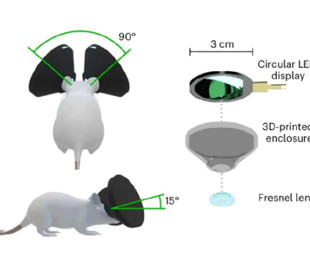
Scientists have “put” virtual reality glasses on mice. Although it sounds strange, it actually makes sense.
The study in the journal Nature Methods is dedicated to tracking brain activity associated with spatial navigation and memory. The specific task required the creation of a specific tool.
The fact is that in the first studies, a “room” was created for mice with panoramic displays that displayed the desired image. And although the rodents quickly understood what was wanted from them, their brain activity was low.
This led to the idea that the animals did not really believe in the reality of what they were seeing. For example, in one of the tests, they were shown a dark spot that quickly expanded in their field of vision, thereby imitating the behavior of a predator. None of the mice showed any significant reaction when using the old systems.
However, the new MouseGoggles glasses made of two small displays from smartwatches and a pair of lenses were able to take the simulation to a new level. Since even this small structure would be too heavy for tiny animals, it was decided to fix it on a stand. The mouse itself was placed on a spherical surface that rotates depending on where it intends to run.
“They have a strong startle response. They really seem to think that a predator is attacking them,” — say scientists.
So what is the essence of the study? Scientists say that the task was to invent a cheap virtual reality device for mice to test their reactions in a wide range of situations, without the need to create appropriate laboratory conditions. In addition, this system has other advantages, for example, it can include eye tracking systems, which would be very difficult to do with traditional learning methods.
The study also concludes that mice can perceive virtual reality as well as the real world. At least in some experiments. This could help in tests aimed at studying complex behavioral reactions, visual perception, learning and spatial memory.
Currently, scientists want to work on creating real virtual reality glasses for mice, which the rodents can wear on their heads. Although the new device works much better than older systems, it partially blocks the mouse's whiskers, which are a very important sensory organ.

